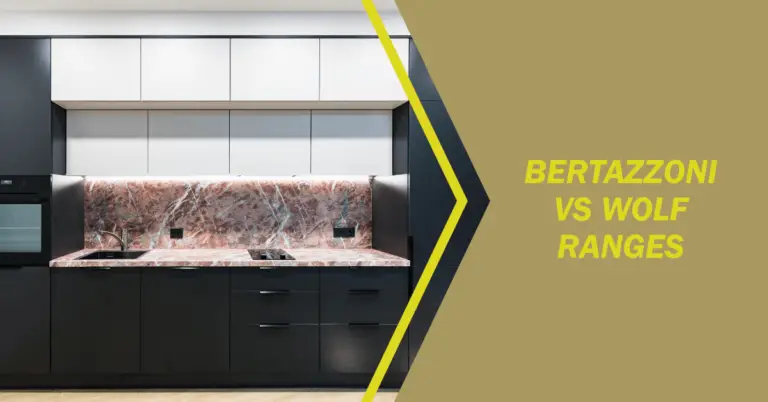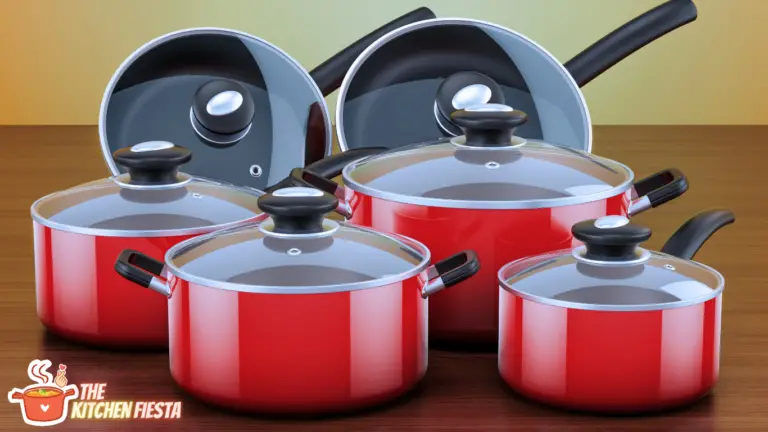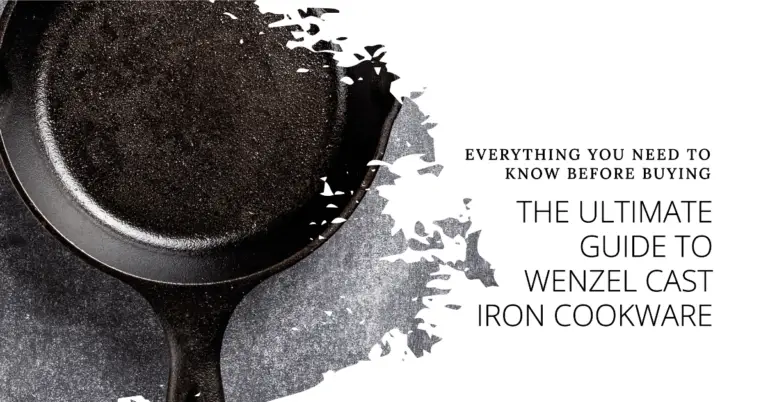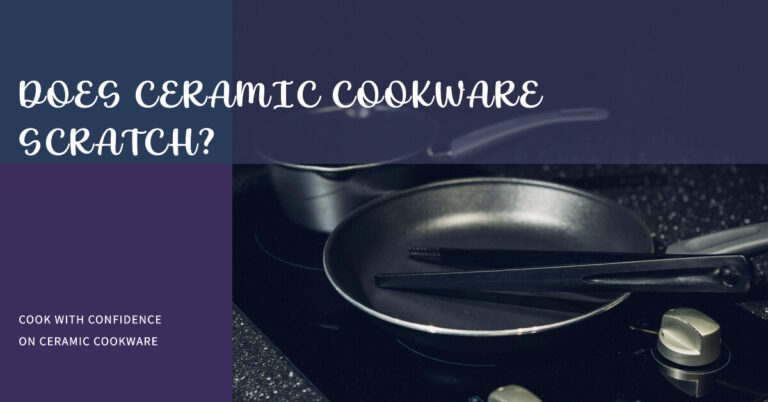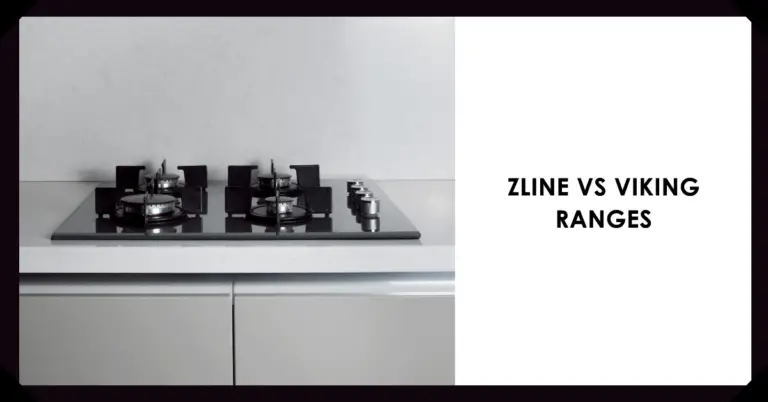Is Blue Diamond Cookware Safe? The Pros, Cons and Alternatives
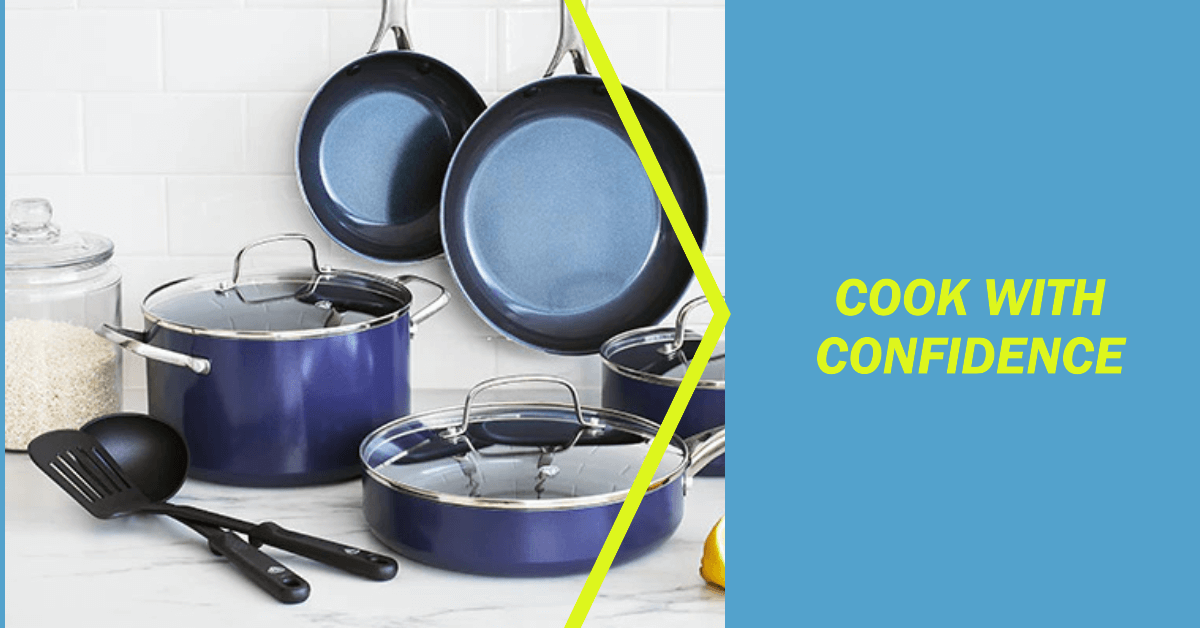
If you’ve been searching for safe, nontoxic cookware free of concerning chemicals, you may have come across Blue Diamond ceramic nonstick pans and wonder – is Blue Diamond cookware really safe to cook with?
With so many conflicting opinions and reports on the safety of popular nonstick pans, it can be hard to know which brands you can truly trust.
In this article, we’ll dive into the key facts on Blue Diamond to help you decide if it delivers on its claims of being a healthier nonstick option…
Overview of Blue Diamond Cookware
Blue Diamond makes a popular line of ceramic nonstick pots, pans, and bakeware. The brand is owned by the company Meyer Corporation based in Vallejo, California.
Blue Diamond touts their pans as being a safe, eco-friendly alternative to traditional nonstick cookware coated in PTFE or Teflon.
The ceramic-based nonstick coating is made from a combination of sand (silica powder) along with water and solvents. This coating is said to be free of concerning chemicals like PFOA, PTFE, lead and cadmium.
Blue Diamond offers frying pans, saute pans, saucepots, bakeware and more across several collections including their Signature, Epic and Distinctions lines. Most products feature an aluminum core construction with layers of the proprietary ceramic coating.
So how does this type of ceramic nonstick coating stack up against traditional Teflon and other popular brands when it comes to safety? Let’s take a closer look…
Is the Nonstick Coating in Blue Diamond Cookware Really Safe?
The big selling point of Blue Diamond pans is the use of a ceramic-based nonstick coating instead of PTFE or Teflon which have faced scrutiny over potential health hazards.
PTFE has been associated with health issues in manufacturing workers exposed to higher levels. There are also concerns around PFOA – the chemical once used to make Teflon – as an environmental contaminant.
Blue Diamond states their ceramic coating is free of PTFE, PFOA and other harsh chemicals. They note it’s made from natural sand rather than any concerning compounds.
Indeed, most experts agree that ceramic-based coatings like those used by Blue Diamond avoid the potential risks linked to PTFE and PFOA exposure. So in this regard, Blue Diamond pans do seem to be a safer bet.
However, a few specific concerns have been raised about Blue Diamond cookware when looking closely at their ceramic coating:
Silica Powder Safety
While the silica sand used in Blue Diamond’s coating is not hazardous in its raw form, questions have been raised about the silica powder after processing.
Some evidence suggests silica nanoparticles could potentially cause lung damage if inhaled at very high levels over prolonged periods. However, during normal cooking use where any silica particles are trapped in the ceramic coating, this is unlikely to pose any serious risks.
Still, some argue inadequate research has been done into the health impacts of inhaling microscopic silica powder especially during overheating or damage to the coating. The risks appear low with reasonable safety precautions but worth being aware of.
Aluminum Construction
The base layers of Blue Diamond cookware are made from aluminum which helps ensure even heating. Aluminum surfaces are coated to prevent contact with food.
While uncoated aluminum has been associated with health hazards when exposed to acidic foods for storage, modern cookware uses inert coatings that prevent any leaching during typical cooking applications.
Experts agree ingesting small amounts of aluminum from cookware is not a significant concern as we are exposed to higher levels from food itself and other environmental sources.
The ceramic coating should prevent any aluminum leaching with reasonable use and care. However, damage to the coating could potentially increase aluminum exposure.
Chipping and Scratching
Ceramic coatings like those used by Blue Diamond tend to be less durable than PTFE-based nonstick. Over time, the coating can chip, scratch and lose nonstick efficacy especially if metal utensils are used.
When the nonstick coating gets damaged or overheats, it poses a higher risk of releasing particles into food. While likely still minimal, chipping or peeling coating is never ideal.
Proper care is needed to prevent scratches and maintain the coating – we’ll cover more shortly on durability and usage tips.
So while not entirely risk-free, Blue Diamond’s ceramic-coated pans avoid the most toxic chemicals implicated in traditional nonstick. With reasonable care and usage, they do represent a safer choice for most home cooks.
Next let’s look at how durable these pans are in real world cooking…
How Durable Is Blue Diamond Cookware?
For any nonstick cookware, durability is a key factor as the coating degrades over time with use, impacting both longevity and safety.
Compared to classic Teflon, ceramic-based nonstick is generally less hard-wearing. The tradeoff for being free of PTFE is shorter lifespan.
However, Blue Diamond claims to have exceptional durability even for ceramic nonstick. Many users praise the coating longevity compared to other brands.
Here are some key points on durability based on experience and owner feedback:
- Prone to chipping/scratching – The coating can chip from impacts or scratches relatively easily, especially when new. Care is needed when handling and washing.
- Avoid metal utensils – Using metal tools shortens the nonstick life. Wood, silicone or plastic is a must for longevity.
- Hand wash recommended – While rated dishwasher safe, hand washing extends the nonstick and keeps it looking nice.
- Lifetime warranty – Blue Diamond provides peace of mind with a limited lifetime warranty against defects. Makes it easy to replace if problems occur.
- Nonstick degrades over time – Like any nonstick, ceramic or not, the release ability diminishes after 1-2 years for most users.
While not as indestructible as stainless steel, with proper care Blue Diamond holds up better over time than cheaper ceramic options. Follow the recommended usage and cleaning methods for maximum durability.
Next let’s examine any potential health impacts…
Does Blue Diamond Cookware Have Any Health Risks?
As covered earlier, Blue Diamond pans avoid the most toxic chemicals implicated in PTFE/Teflon nonstick. But two areas require a closer look when it comes to any possible health risks:
Aluminum Construction
The aluminum core in Blue Diamond has sparked some health concerns, however it is hard anodized for durability and sealed by ceramic layers to block contact with food.
What does the research say about aluminum exposure from cookware?
- Aluminum ingested in small amounts is considered safe based on food regulatory bodies (EFSA, FDA).
- Most research finds minimal aluminum is actually ingested during normal cooking applications.
- Any leaching is typically well below established safe consumption levels, even when cooking acidic foods.
- The ceramic coating should prevent aluminum leaching if intact. But damage leads to greater risk of release.
While no definitive long-term studies exist, overall evidence and expert opinions suggest using modern aluminum cookware carries little health risk for most people. The ceramic coating provides an added barrier.
However, those with health conditions like impaired kidney function may still want to minimize aluminum intake as a precaution. Glass or pure ceramic cookware avoids this concern.
Ceramic Coating Safety
As discussed earlier, there are limited concerns over potential inhalation risks from microscopic silica particles in ceramic coatings.
However, during normal cooking usage, direct ingestion or inhalation exposure would be minimal. The silica is integrated into the ceramic layers, not loose.
Proper cooking temperatures and avoiding overheating empty pans further reduces any ceramic particulate release. There is no evidence of toxicity issues from ingesting small ceramic coating particles.
While ceramic coatings have less history of study than traditional materials, they appear safe in the limited exposures through cooking if used properly and not damaged. Those wanting 100% certainty may prefer pure ceramic cookware.
Overall, with reasonable care and safety practices, Blue Diamond pans pose only minimal health risks for most people that are comparable to other quality nonstick options currently available.
Now let’s see how nonstick they really are…
How Nonstick Are Blue Diamond Pans?
For any nonstick cookware, the big question is – how slippery is the cooking surface really?
A good nonstick allows easy food release, makes cooking and cleanup a breeze, and requires less oil for healthy cooking.
Here’s an overview of how Blue Diamond’s ceramic coating actually performs:
- Excellent when properly seasoned – The surface becomes nicely nonstick after a few uses. This “seasoning” maximizes the release ability.
- Avoid metal utensils – As mentioned, using metal damages the coating leading to sticking and scratches.
- Don’t overheat when dry – The coating can lose nonstick ability and degrade faster when overheated empty.
- Oil still needed for best performance – A small amount of oil prevents sticking, enhances the nonstick effect.
- Hand wash gently – Avoid abrasive scrubbing as this further damages the coating surface.
- Nonstick diminishes over time – After 1-2 years, the release ability fades and food sticks more often.
While not as effortless as PTFE-based Teflon initially, most users find Blue Diamond pans provide very good nonstick ability with proper seasoning and care. The performance exceeds most ceramic options.
For the health-conscious cook wanting an alternative to Teflon, Blue Diamond strikes a good balance of nonstick function while avoiding harsher chemicals.
Next let’s compare Blue Diamond to some other popular nonstick brands…
How Does Blue Diamond Compare to Other Popular Brands?
Blue Diamond is positioned as a premium ceramic nonstick aimed at the health-conscious cook. But how does it stack up to other big names like T-fal, Rachael Ray, Granitestone and more?
Here’s a look at how Blue Diamond compares to some top rivals:
Vs T-fal:
- T-fal uses PTFE-based Teflon coating with some PFOA concerns historically.
- T-fal offers better nonstick initially but coating deteriorates faster over time.
- Blue Diamond has better heating, lower risk of releasing fumes, more eco-friendly.
- T-fal cheaper but higher long-term costs with shorter lifespan.
Vs Rachael Ray:
- Rachael Ray cookware uses traditional nonstick coatings with PTFE/PFOA.
- Similar easy food release when new but coating scratches easier.
- Blue Diamond pricier but more durable long-term if cared for properly.
- Rachael Ray better value for those okay with regular nonstick.
Vs Granitestone:
- Granitestone also ceramic nonstick and PTFE/PFOA-free
- Granitestone cheaper but coating less durable and scratches easier.
- Blue Diamond better heating, lower risk of chipping and degrading over time.
- Granitestone decent budget option but Blue Diamond worth paying more for longevity.
While pricier upfront, Blue Diamond competes well with both classic Teflon and other ceramic options when considering coating safety, longevity and overall value.
Now let’s wrap up with our final verdict…
The Bottom Line – Is Blue Diamond Worth Buying?
For those wanting the healthiest nonstick option, Blue Diamond is arguably the best ceramic coating choice. It avoids the most toxic chemicals and provides decent durability with proper care.
However, Blue Diamond still carries some risks if overheated or damaged. And it requires more maintenance than classic Teflon to get the longest use.
While not completely foolproof, Blue Diamond delivers quality ceramic nonstick ability and better longevity than cheaper brands. The warranty also ensures you’re covered in case of defects.
For eco-conscious cooks wanting an alternative to PTFE/Teflon, Blue Diamond pots and pans represent a good balance of safety, performance and convenience. Their ceramic coating outperforms most while avoiding PFOA and similar harsh processing chemicals.
With reasonable expectations and proper use, Blue Diamond can be a wise investment for those valuing the healthiest option in safer, more eco-friendly nonstick cookware.

